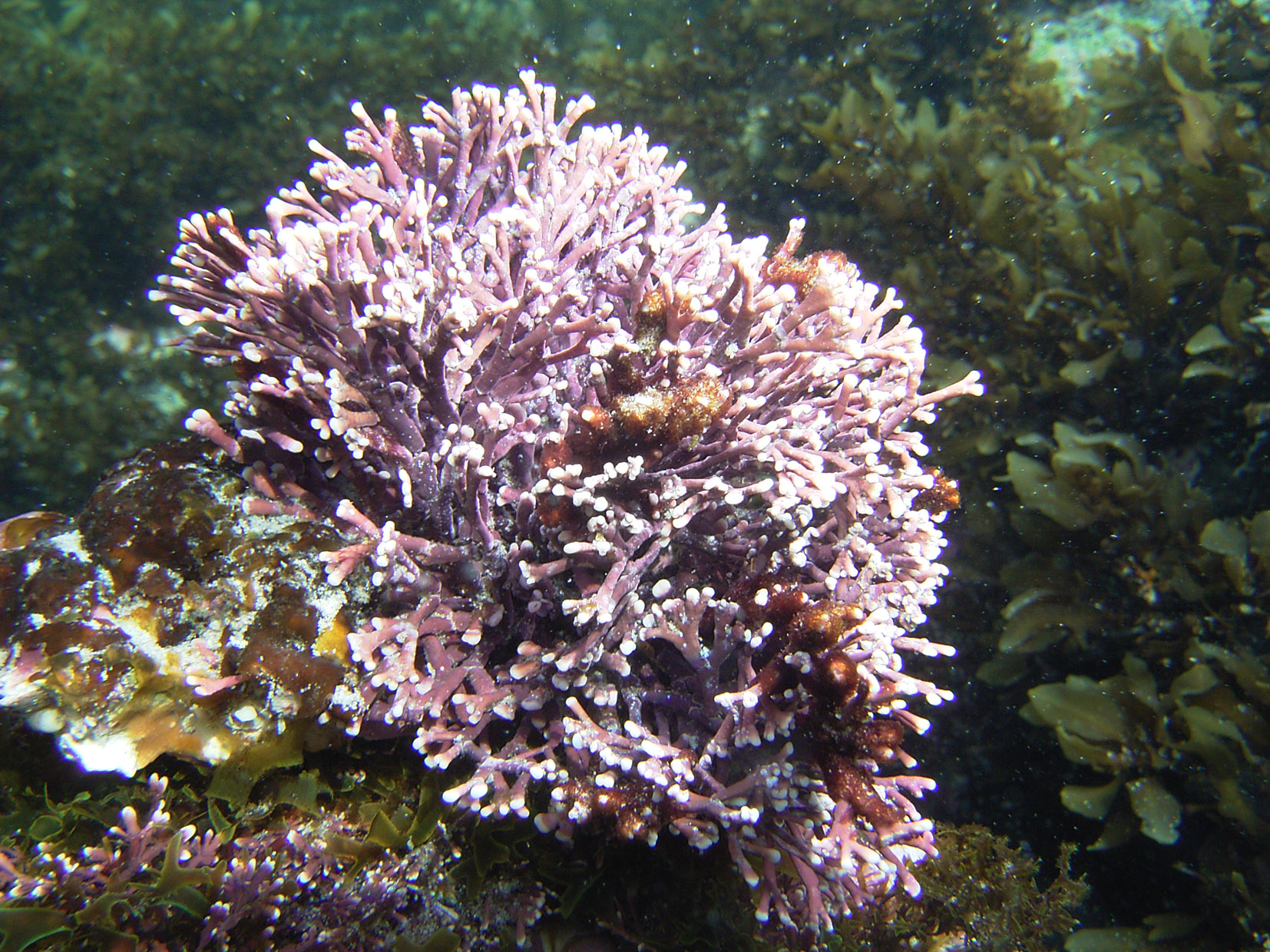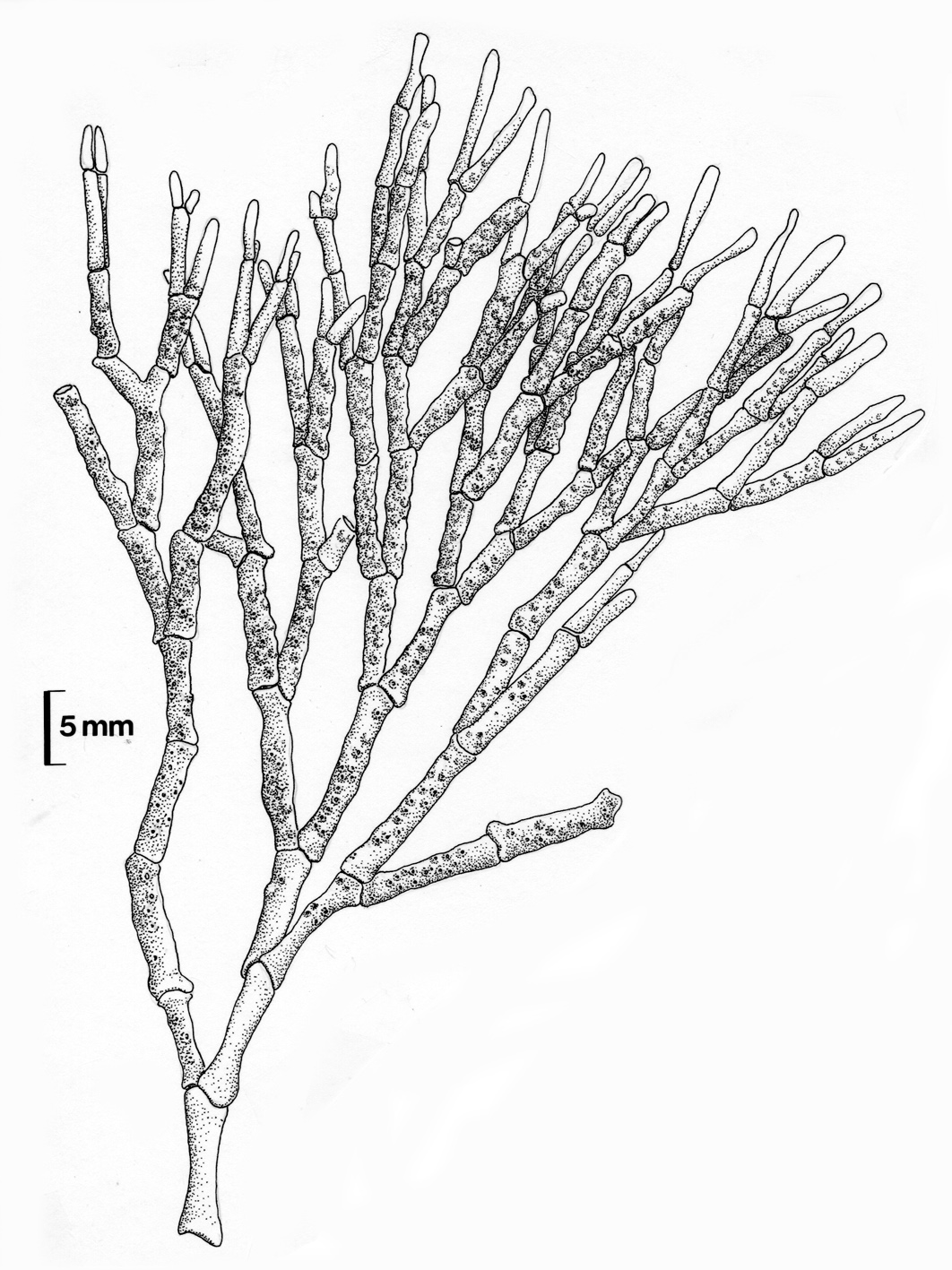Seaweeds of the South African South Coast


Order Corallinales
Family Corallinaceae
Sub-family Corallinoideae
Amphiroa capensis Areschoug in J. Agardh 1852: 533
Plants grayish, up to 10 (-15) cm tall, regularly dichotomously (rarely trichotomously) branched. Genicula inconspicuous, only exposed in older parts of plant. Intergenicula cylindrical, up to 12 mm long, 1-2 mm in diameter, with distinct aprons at upper and particularly lower ends that obscure the genicula. Conceptacles up to 600 µm in diameter, hemispherical, imparting warty appearance to fertile segments.
Collections, ecology and regional distribution
Occurs in deep rock pools and from the subtidal fringe to subtidal zone. Found from the western Cape Peninsula to Port Alfred (16-39)
World distribution: This is considered to be a South African endemic and a record from West Africa is discounted by Lawson and John (1982).
Note: this was not among the South African species examined in the barcoding study of Kogame et al. (2017).

Amphiroa capensis, Arniston.

Amphiroa capensis. Reproduced from Stegenga et al. (1997).
References Amphiroa capensis
Agardh J. 1852. Species genera et ordines Floridearum 2(2), Lund, 337-720.
Kogame, K., Uwai, S., Anderson, R.J., Choi, H-G. & J.J. Bolton. 2017. DNA barcoding of South African geniculate coralline red algae (Corallinales, Rhodophyta). South African Journal of Botany 108: 337-341.
Lawson, GW & John, DM, 1982. The marine algae and coastal environment of tropical West Africa. Beihefte zur Nova Hedwigia, 70: 1-455.
Stegenga, H., Bolton, J.J. and R. J. Anderson. 1997. Seaweeds of the South African west coast. Contributions from the Bolus Herbarium 18: 655 pp.
Cite this record as:
Anderson RJ, Stegenga H, Bolton JJ. 2016. Seaweeds of the South African South Coast.
World Wide Web electronic publication, University of Cape Town, http://southafrseaweeds.uct.ac.za; Accessed on 07 January 2026.